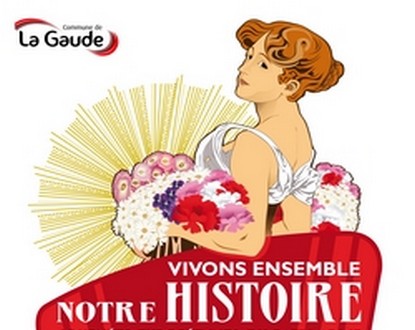We are well acquainted with La Gaude and its bitter orange trees, but few people, no doubt, know the full richness and history of this very old vineyard, born with the Roman presence and considered a benchmark vintage in Provence in the 19th century.
The wine of La Gaude has been tasted by enthusiasts, sung by poets, and praised by oenologists. To address this oversight, a conference will be held this Saturday, September 20th, at 9 AM as part of the European Heritage Days, in the hall of La Coupole.
Catinat, Marshal of France under Louis XIV, considered it “above all the wines of France.” Scientists, oenologists or agronomists such as Muraire, Jules Guyot, De Lapparent, Ed. Zacharewicz, Jules Grec, Louis Belle, E. Garcin, Roos, Belleudy, Miss L Dupuy, Jean Arnaud, Raymond Brunet, and of course E. Boniffacy have published serious studies on the wines of La Gaude.
In 1781, M. Muraire, in his “Memoir on the species of grapes in Provence most suitable for making wines of the best quality,” cites the wine of La Gaude as a reference in his comparative studies. M de Lapparent, a professor at the Faculty of Sciences of Paris, mentions only two territories in the Alpes-Maritimes notable for their vineyards: Bellet and La Gaude. This quality is due to the Pliocene gravelly soil resting on conglomerates and the grape varieties used in both terroirs.
While in the Alpes-Maritimes, vineyards occupied only 5% of cultivated land at the beginning of the 20th century, the production of La Gaude covered two-thirds of the municipality and contributed to a third of the revenues. A specific grape variety, Panéa, contributes to the recognition of its quality by all specialists.
Phylloxera had little impact on the production, and the old vintages could be reconstituted on American rootstocks. Dr. Guyot dedicated a particularly important study to this in 1854, in a report intended for the Ministry of Agriculture. The agricultural inspectors, from Jules Grec or Louis Belle to Jean Arnaud, have repeatedly described it in their reports.
Finally, poets and artists celebrated it. Paul Arène speaks in The Boat of the 6 Captains of “the flashes of La Gaude wine that illuminate minds.” Dominique Durandy chose to talk about the wine of La Gaude “that brings joy to the most morose hearts,” in a rare book illustrated by E Lessieux and Gustav Adolph Mossa. Trachel painted the vineyards of La Gaude Castle. Cyril Connolly, in his book The Rock Pool, mentions the painters Modigliani, Soutine, and Foujita who drink “the excellent wine of La Gaude.” Prévert, in his turn, describes the Saint-Jeannet vineyard in his poem Vignette for the Winegrowers, illustrated by Françoise Gillot, Picasso’s companion, who visited La Gaude.
But wine is also the daily work of the people of La Gaude, with a whole gavot vocabulary and proverbs surrounding wine.
So why has this vineyard, a reference in viticulture for several centuries, disappeared?
This is the story that Alex Benvenuto, from a family of La Gaude winegrowers, a member of the editorial committee of the magazine Lou Sourgentin, and a historian specializing in the civilization of our County, will tell you so that you can say with Francis Gag while drinking your wine: A qu noun plas lou vin, que Dieu li leva l’aiga (If someone does not like wine, may God take away their water).


